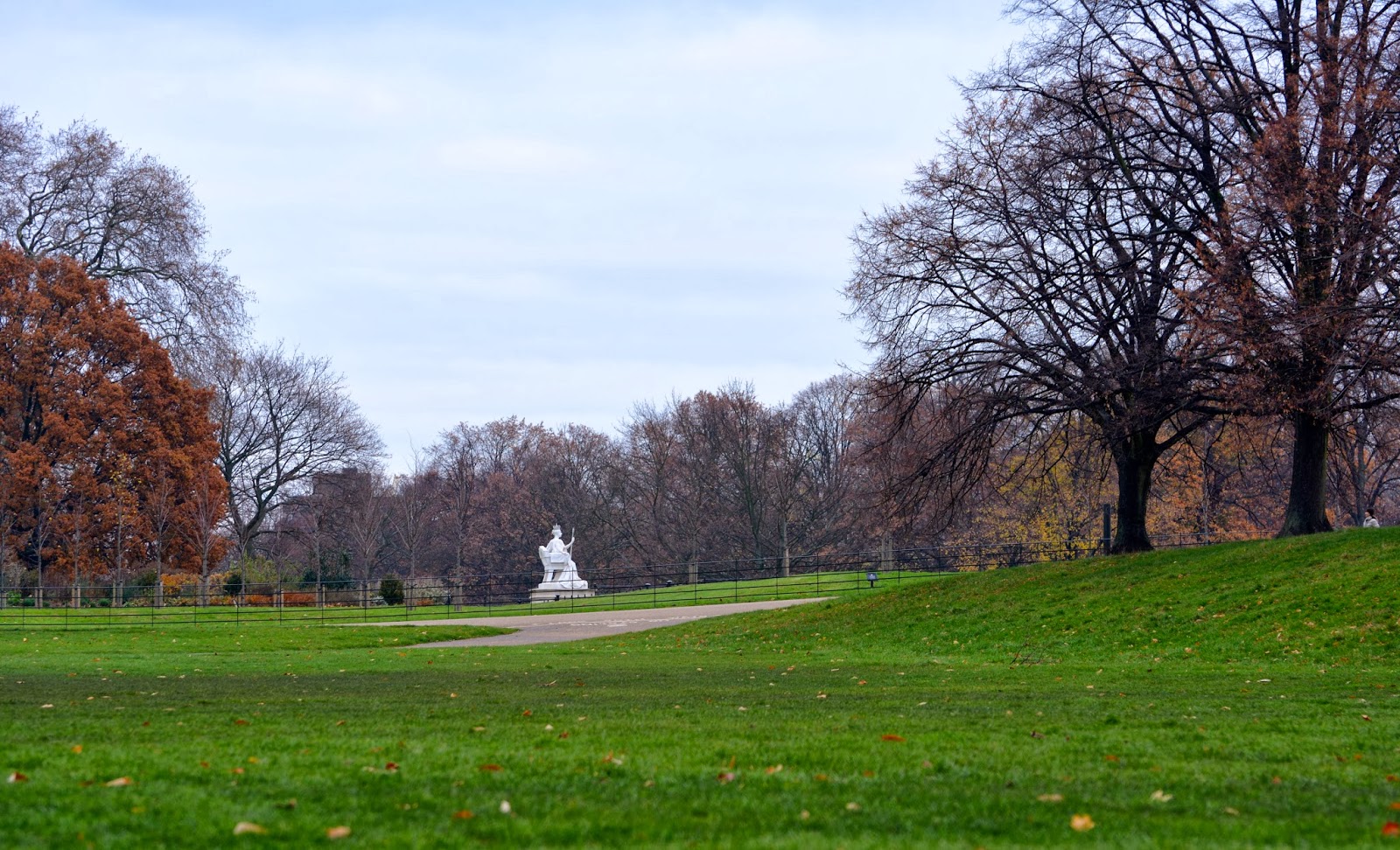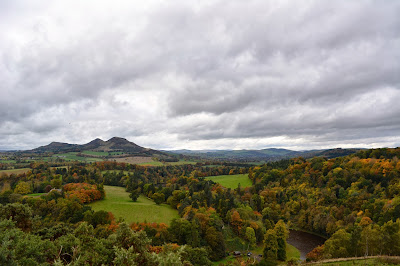After the performance I stood around and waited to see if anyone would come out the stage door. Apparently Plácido Domingo had left through the front relatively quickly, and no one else came out. That said, I might go back another night and just come for that and see if I can see someone. I hope to go to Strauss' Arabella and Ariadne auf Naxos before going away on the Three-City Tour.
So, as I mentioned, it's been an eternity since I blogged here but I promised some new material. I am happy to say I have just returned from the Wiener Staatsoper's season opening performance of Giuseppe Verdi's
Simon Boccanegra. The production was overall quite excellent, and it was a really great experience, even if I was in the standing room section with not the best view.
 |
| Poster Outside Wiener Staatsoper |
Here is the cast list:
- Paolo Carignani | Dirigent
- Peter Stein | Regie
- Stefan Mayer | Bühne
- Moidele Bickel | Kostüme
-
- Plácido Domingo | Simone Boccanegra, Erster Doge von Genua
- Ferruccio Furlanetto | Fiesco, Haupt der Adelspartei
- Fabio Sartori | Gabriele Adorno, junger Edelmann (In the performance I saw, Fabio Sartori was sick and replaced by Massimiliano Pisapia)
- Barbara Frittoli | Amelia
- Eijiro Kai | Paolo
- Dan Paul Dumitrescu | Pietro
- Carlos Osuna | Hauptmann
- Simina Ivan | Dienerin
For those interested in the procedure of getting standing room tickets, I will detail that in a post on
http://sojournvienna.blogspot.com/ as well as copying this review, there. Here I will focus on the actual content of the performance. I will begin with the more cohesive (as there are many singers to describe, but only one of each of the following) elements of set design, costuming, and staging.
Before beginning however, for those unfamiliar with the plot, a synopsis can be found here:
http://en.wikipedia.org/wiki/Simon_Boccanegra#Synopsis
 |
One of the blander set pieces - sadly I can't find any photos
of the nicer ones (and I of course wasn't taking photos) |
The set design was a mixed bag, as far as I was concerned. I will admit that perhaps some of what I saw as simplistic or unimaginative was purposefully so, trying to present a blank slate for certain scenes while employing a more involved set for others. That said, if that's the idea the designer wants, it is important to make audience members
feel the
intentional emptiness when it is intended. Now, while a few scenes with almost no set pieces on stage and there were one or two (while the Doge is meeting with the Patricians and the Plebians, for instance) that just looked like a cardboard house, there were also some really cool moments. The opening of the show, for instance, with hollow blue, glowing boxes on either side of the stage gave an eery feeling as Boccanegra's cloak blew back behind him during his confrontation with Fiesco. As he mourns the death of his lover, the church candles behind the black gauze was also inspiring. Later, as the confrontations between Paolo, Fiesco, and Gabriele Adorno occur, the metal, white backlit plastic, and red curtained circle that was employed gave quite an impression. It was decidedly not a period piece, but it was awesome watching the lights go down as Paolo denied Adorno exit through any door. Finally, it was an excellent, dramatic place for Boccanegra to drink his poison. Finally, when Boccanegra dies at the end of the opera and the principals as well as the rest of the crowd gather around his body, having it raised up on a pedestal from the floor had a dramatic effect and gave an excellent tableau ending (and kudos to Plácido Domingo who, despite having his head hanging slightly off the platform, didn't move an inch).
 |
| Domingo in his white robes and Doge's hat/crown |
The costuming was definitely done with a clear direction in mind, and I have none of the complaints I did regarding the set design. The rich red and teal green outfits dividing the Patricians and Plebians were only complimented by the menagerie of dress then used for the populace (or mob, in some scenes). Not only did this make the chorus groups on stage easy to follow, it also made it clear their philosophical and social divisions. Having Fiesco dressed consistently in drab grey or brown clearly represented how he "haunts" Boccanegra throughout his life. I thought it was particularly interesting to have Gabriele dressed in dashing red, befitting any young Verdian tenor lover/hero but to have Paolo in a somewhat more subdued orange, as though he, the villain, were trying to be the man of Maria's heart, but was somehow "off." Maria was almost consistently dressed in a pure white dress. This was appropriate for her marriage, of course, but also it represented her purity throughout the show, despite her illegitimacy - physically representing the point that actions are more important than birth. Finally, in the first scene, Plácido Domingo was clothed as I almost feel like I've always seen him - a long black cloak over some sort of t-shirt like thing, all in black, suggesting a rustic, militaristic nature. Still, it was a good juxtaposition with his clothing 25 years later as the Doge. His white robes, contrary to Maria's, generate irony - the purity of his love contending with the crimes of his rule and his struggle to stay one step ahead of his enemies.
Finally: the singing and acting. The piece was well sung throughout. The Staatsoper pulled together an excellent, essentially all-star cast for its opening production. The chorus had some particularly ringing moments which added to the excitement of crowd scenes. The comprimario artists were solid in their performances, Dumitrescu, Osuna, and Ivan all fulfilled their roles with strong, consistent singing. Kai, as Paolo, had the perfect strength and color of baritone to communicate ambition, arrogance, and menace while not overpowering Domingo as Boccanegra. As a side note I must complain that while the orchestra was generally good, there were some rather obvious slips (I am not particularly good at recognizing orchestral errors, but these I heard clearly).
 |
| The Staatsoper during intermission |
Massimiliano Pisapia made an impressive Gabriele as an understudy. His voice was loud, ringing, and relatively consistent. There were a few moments where he dropped into a more throaty tone that was clearly more difficult for him and less pleasant for us. Again, however, he sang the role well. His acting, particularly the juxtaposition between amorous declarations, outbursts of rage, and later, repentance, were excellent. The greatest complaint I have is that Pisapia's voice does not seem particularly unique, like a textbook version of a Verdi tenor. I enjoyed his performance, nonetheless.
 |
| Furlanetto, Frittoli, Carignani, Domingo, and Pisapia |
Ferruccio Furlanetto impressed me last year when I saw him for the first time in a Met Broadcast of Don Carlo. He has, of course, been in the business for a long time. Aging as he is, he still brought a robust bass with crisp, full low notes to Simon Boccanegra. His acting was impressive as well. He was a tired, weary Don Carlo. As Fiesco, he was also a man who had been world-wearied, but he played it in this case as a man driven by his resentment and desire for vengeance, but who, when pushed to actually harm Boccanegra and upon discovering his poisoning, regretted his feeling and ultimately made peace with his adversary for the sake of the family.
 |
Domingo bowing -
He also kissed his hand and touched the stage, once! |
Domingo, of course, is a paragon of the opera world and a legend I was happy to see before he finally retires. I must confess, he has never been my favorite tenor (acknowledging I'd only heard him recorded). His voice is robust and powerful, but less beautiful throughout and without tenor high notes that even other dramatic voices have had more easily. As a baritone, however, he blew me away. He easily filled the hall with large, ringing, Verdian tone and style. Certainly at the most dramatic moments he was giving a lot, but it never seemed to be more than he had - it looked relatively easy throughout. His voice sounded healthy and unstrained even on the most taxing passages of high Verdi baritone notes. When sweetness was required, he had it at his command as well, likely owing to his reserve of vocal size and ability. Domingo has also, of course, been recognized as one of the great actors on the opera stage. This was apparent as he moved through the diverse palette of emotions required by the role of Boccanegra. He convincingly displayed tiredness from his long reign, anger, rage, and hate for his enemies, fear that they might ruin him, courage when faced with a drawn blad, love for his daughter, clemency to Garbiele, and so forth. He is truly a pinnacle of opera, and his move to baritone repertoire will make him a singular legend in opera history.
For all the glory of Plácido Domingo, I must say that I was perhaps most surprised and impressed with Barbara Frittoli. Her name is one, of course, that I have heard bandied about, but she has never quite procured the fame of others in the business. Her singing was frankly incredible. It was sweet and ringing when expressing her love for her father, powerful and imploring when expressing her desires to him that she be able to love Gabriele, passionate with Gabriele himself, and even deploring when met with adversity from the Doge's adversaries. I was surprised that the sweet, relatively light tone was able to both cut through and climb over the orchestra and ensemble. Despite this, her pianissimos were also stunningly well controlled. Her role did not provide the range of Domingo's, and she did not fulfill that which was given her quite so well, but I can only say that her acting was, in fact, good.
 |
| The gilded curtain of the Wiener Staatsoper |
With that I will conclude what may have become a rather lengthy opera review. That said, I thoroughly enjoyed the piece and wanted to do justice to the impressive production. It was certainly worthy of the opening night of the Staatsoper season, and I look forward to many more performances there. If coursework does not get in the way, I hope to view Strauss' Arabella and Ariadne auf Naxos this week before leaving on a ten day trip of Prague, Krakow, and Budapest.





















Comments
Post a Comment